Most twin or multiple pregnancies are discovered during an ultrasound. If you’re having a twin pregnancy or other multiples, here’s what you need to know to take good care of yourself and your babies. So in this article I will be talking about Twin pregnancy ultrasound. Ready? Let’s begin..
As you probably know there are multiple types of twin pregnancies:
Fraternal twins: The most common kind of twins, this pregnancy occur when two separate eggs are fertilized by two different sperm. Each twin has his or her own placenta and amniotic sac. They can be the same or different gender.
Identical twins: This occur when a single fertilized egg splits and develops into two fetuses. Identical twins might share a placenta and an amniotic sac or the twins might share a placenta and each have separate amniotic sacs. Genetically, the two babies are identical. They’ll be the same gender and share physical traits and characteristics. Rarely, identical twins fail to completely separate into two individuals. These babies are known as conjoined twins.
As in any pregnancy, single or multiple the ultrasound protocol is the same. The first ultrasound is performed to get measurements for dating purposes, also the heartbeat should be obtained, checking the yolk sacs, amnion and Chorionicity on twins is essential to know how to proceed with the pregnancy.
The risks of complications on multiple pregnancies is a lot higher than single pregnancies.
If you are pregnant with twins here is what you need to know.
- Morning sickness is worse due to high levels of hormones in your body.
- Vaginal spotting and/or cramping is more common during twin pregnancies which means you will be having Ultrasounds more often.
- Higher chances of having medical conditions like Gestational diabetes, preeclampsia etc.
- Labor and delivery will be sooner and most likely be by C-section.
Learning something today, pin it for later!

What are the different types of twins?
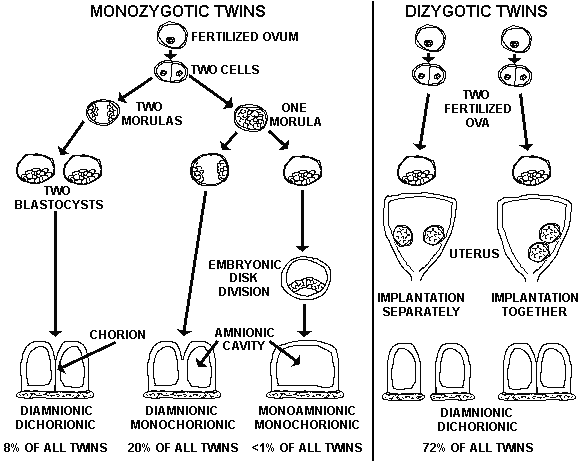
So below I explain the most important types of twin pregnancies seen on ultrasound. I will start with the rarest and most dangerous one which is the MONOAMNIOTIC-MONOCHORIONIC. Follow by DIAMNIOTIC-DICHORIONIC, and finally. I will briefly talk about the DIAMNIOTIC-MONOCHORIONIC.
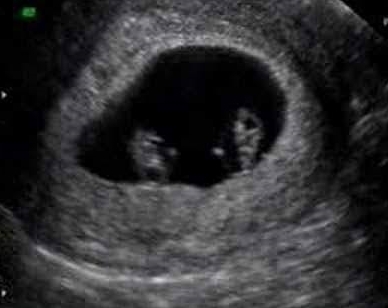
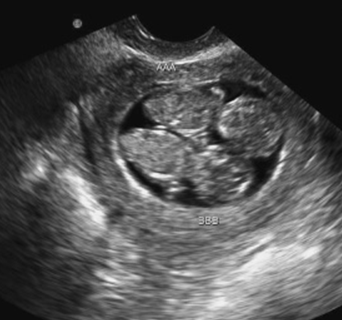
Let’s start with MONOAMNIOTIC-MONOCHORIONIC.
Monoamniotic-Monochorionic twin pregnancy shares ONE amniotic sac and ONE placenta. Therefore, the risks associated with this pregnancy is higher than other twins.
Risk associated with Monoamniotic-Monochorionic twin pregnancy.
- Cord Entanglement: Since there is no membrane separation between the babies, their umbilical cord could get entangled, cutting off the blood supply to one of the babies.
- Cord compression: As they share the same sac they might press against the others umbilical cord while making internal movements. Prolonged pressure may cut off blood supply and nutrients to one of the babies, resulting in fetal death or weight discrepancies.
- Twin to Twin Transfusion Syndrome: This syndrome happens when one of the twins receives the majority of the nourishment in the womb. Causing the other twin to be undernourished. That is detected on regular scanning based on the physical development of both babies.
- Preterm labor: always occurs on mono-mono twins due to the high risks on cord entanglement and compression, is usually done by C-section between 34 to 36 weeks, however, some mono-mono can be delivered at 26 weeks if there are other complications.
Other facts about Mono-Mono twin pregnancies:
- Mono-Mono babies are always the same gender since they originate from the same fertilized egg.
- Mono-Mono twins are rare, ONLY 1% of twins are mono-mono.
Let’s talk about DIAMNIOTIC-DICHORIONIC.
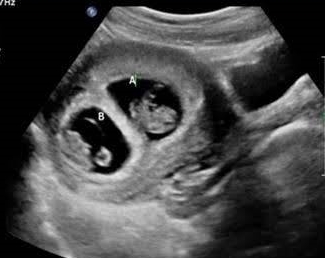
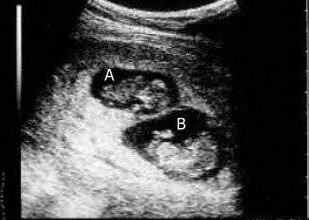
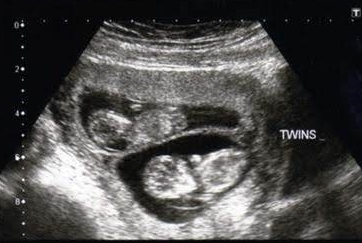
Related posts.
Normal first trimester 6 weeks ultrasound.
All about normal 7 week ultrasound.
How to prevent preterm labor naturally.
Baby essentials, checklist for the registry included.
Complications of Diamniotic-Dichorionic twins
While the complication rate is still much higher with twins than with a singleton pregnancy, a Diamniotic-Dichorionic pregnancy carries the lowest rate of complications amongst twin pregnancies. However, some of the complications can include:
*Increased risk of intrauterine growth restriction (IUGR): Means that one baby is not growing appropriately compared to the other twin.
*Placental related problems: such as increased risk of velamentous cord insertion, marginal cord insertion or placenta previa.
Let’s talk about DIAMNIOTIC-MONOCHORIONIC.
This type of twins is about 20% of all twins, forms after ONE single fertilized egg SPLITS, this type of twin shares ONE placenta but have 2 different Amniotic sacs.
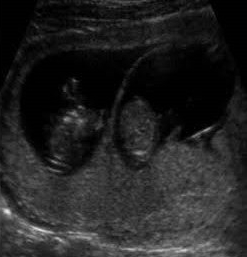
This type of twin shares ONE placenta, so there are complications associated with it:
Potential complications that can occur with this type of pregnancy include:
problems related to abnormal placental vascular anastomoses
- Twin to twin transfusion syndrome.
- Embolization syndrome
- Reversed arterial perfusion sequence.
- Demise of one twin: often associated with some adverse outcome to the other twin.
- Other placental insertion related problems such as increased incidence of velamentous cord insertion and/or increased incidence of marginal cord insertion.
Other types of multiple pregnancies can also occur (Triplets, quadruplets etc.) the most important purpose of the Ultrasound is identify Chorionicity, one placenta vs two placentas.
The ultrasound protocols are always the same for any type of pregnancy.
And remember that being able to grow inside your body one life is precious but being able to grow more than one life at a time is even more precious, as I called it ” the miracle of life”, you are blessed and every baby is a blessing.
Final thoughts for Twin pregnancy ultrasound.
This is the most relevant info about twin pregnancy ultrasound. I will start the weekly scanning on my next post, from week 7 to week 40 of pregnancy with ultrasounds, see you on my next post.
Zadi, xo
Disclaimer: Due to HIPPA compliance and regulations all patient information is protected on this site. Also the information provided on my blog is designed to provide helpful information about the topic and are made with the best of my knowledge therefore is not intended to diagnose or treat any medical condition, For diagnosis or treatments on any medical problems consult your own physician. The author is not responsible or liable for any mistreated pathologies or wrong treatments.









Good info
[…] Twin pregnancy, twin pregnancy ultrasound. […]
[…] Twin pregnancy, twin pregnancy ultrasound. […]
[…] Twin pregnancy, twin pregnancy ultrasound. […]
[…] Twin pregnancy ultrasound. […]
[…] Twin pregnancy ultrasound. […]
[…] Twin pregnancy ultrasound. […]